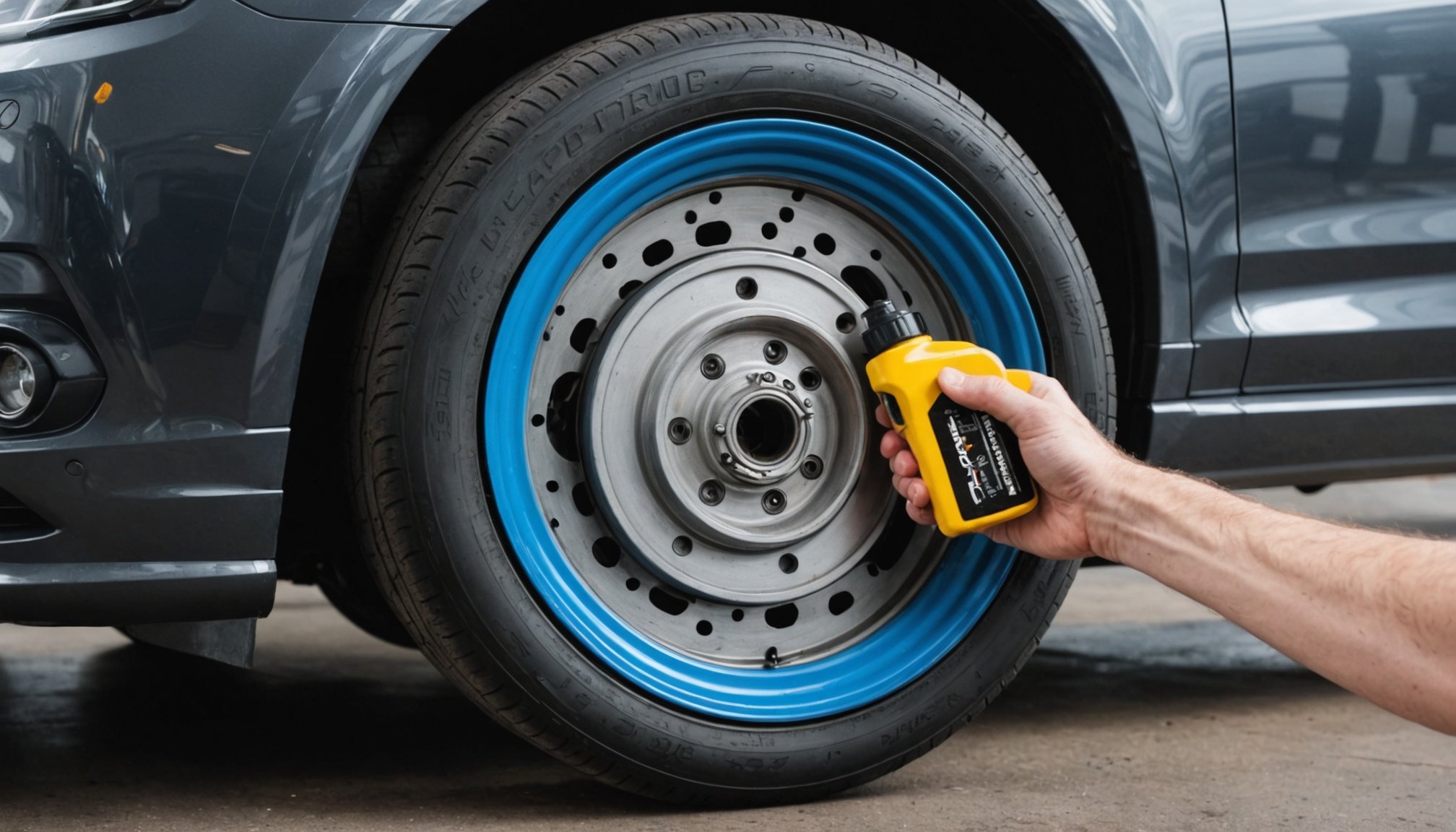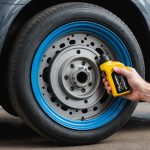Maintaining your vehicle’s braking system is crucial for your safety and the longevity of your car. The brakes are one of the most vital components of your vehicle, and ensuring they function correctly can mean the difference between a safe drive and a potentially dangerous situation. One of the key aspects of brake maintenance is cleaning, which involves using the right brake cleaner to keep your brake pads, discs, and overall braking system in optimal condition. In the UK, where weather conditions can lead to rapid wear and rust, understanding how to choose the best cleaner is essential. This article will guide you through the factors to consider when selecting a brake cleaner that suits your car’s needs.
Understanding Brake Cleaners
Before diving into the specifics of brake cleaning, it’s helpful to understand what brake cleaners are and their role in vehicle maintenance. Brake cleaners are specialized solvents designed to remove dust, grease, grime, and other contaminants from brake components. They help ensure that your brakes function effectively by providing a clean surface for the pads to make contact with the discs.
In the same genre : How do I choose the right type of UK vehicle battery maintainers for my needs?
There are various types of brake cleaning products on the market, each formulated with different chemicals and properties. It is essential to choose a cleaner that is compatible with your vehicle’s braking system. The wrong cleaner can lead to damage, such as degrading the rubber parts of your brake system or leaving residues that interfere with braking performance.
When selecting a brake cleaner, consider whether it is a solvent-based or a non-flammable, water-based product. Solvent-based cleaners are typically more effective at cutting through grease and grime but can be harsh on some materials. In contrast, water-based cleaners are more environmentally friendly and less likely to damage components. Ensure that you check the product’s specifications to see if it suits your vehicle type and brake system.
Additional reading : How do UK vehicle coolant products differ from standard coolant solutions?
Additionally, consider the ease of application. Many modern brake cleaners come in aerosol cans for convenient spraying. Others may require more manual application, which could be messy or complicated. Whichever type you choose, ensure that it comes with clear instructions, as proper application is vital for effective cleaning and avoiding damage.
The Importance of Regular Brake Checks
Regularly checking your vehicle’s brakes is crucial for safety and performance. Over time, brake pads can accumulate dust and debris, which can lead to decreased performance and even audible squeaking or grinding noises when braking. Establishing a routine that includes inspecting your brakes can help identify issues before they turn into costly repairs or, more importantly, dangerous situations.
When you perform a brake check, look for signs of wear on your brake pads and discs. If the pads appear worn down or the discs have noticeable rust, it may be time to clean or replace these components. Using a quality brake cleaner can improve not just the appearance but also the functionality of these parts.
During your inspection, don’t forget to check the brake fluid level as well. Low fluid levels can indicate leaks or excessive wear in the braking system. If you find that cleaning doesn’t resolve your problems, it’s advisable to seek professional help.
Furthermore, consider the condition of your tyres during these checks. While they may not seem directly related, tyres play a significant part in the overall braking efficiency of your vehicle. Worn-out tyres can lead to increased stopping distances and a higher risk of brake fade. By keeping both your brakes and tyres in good condition, you significantly enhance your vehicle’s safety.
Steps to Effectively Clean Your Brakes
Cleaning your brakes should be approached with care and attention to detail. Follow these steps to effectively clean your braking system, ensuring you maintain optimal performance:
-
Gather Your Materials: Before starting, gather all necessary materials. You will need a suitable brake cleaner, a wire brush or scraper, clean rags, and safety gear such as gloves and goggles.
-
Lift Your Vehicle: Use a jack to lift your vehicle and secure it on jack stands. Ensure that the vehicle is stable and that you have enough space to work safely.
-
Remove the Wheel: Take off the wheel to access the brake assembly. This will provide unobstructed access to the brake pads and discs.
-
Inspect the Brakes: Before cleaning, inspect the brakes for any signs of damage or wear. Check for cracks in the brake pads or excessive rust on the discs.
-
Apply the Brake Cleaner: Generously spray the brake cleaner onto the brake pads and discs. Allow the cleaner to soak in for a few moments to break down any grime.
-
Scrub the Surface: Use your wire brush or scraper to remove any built-up dust or rust. Be gentle to avoid damaging the surfaces.
-
Wipe Down: After scrubbing, use a clean rag to wipe down the surfaces, ensuring that all residues of the cleaner and debris are removed.
-
Reassemble and Check: Once cleaned, reassemble the wheel and lower the vehicle. Ensure that everything is securely fastened before taking your vehicle for a test drive.
By following these steps, you can maintain a dust-free brake system that operates without hindrance, enhancing your vehicle’s overall safety.
Choosing the Right Brake Cleaner for Your Car
Selecting the right brake cleaner tailored to your vehicle’s requirements is crucial for effective maintenance. There are several factors to consider when making this decision. Firstly, understand your vehicle’s specific needs. Different brake systems may require unique cleaning solutions, so always refer to the manufacturer’s recommendations.
Another important aspect is to look for products that are designed specifically for your type of brakes. Some cleaners are formulated for disc brakes, while others might be suitable for drum brakes. Additionally, if your vehicle is exposed to harsher conditions, such as off-road environments or frequent wet weather, a more robust cleaner may be necessary.
Another consideration is the environmental impact of the products you choose. Many manufacturers offer environmentally friendly cleaning solutions that do not contain toxic chemicals. These products can often be just as effective as their traditional counterparts, making them a great choice if you’re environmentally conscious.
When purchasing a cleaner, reading customer reviews can also provide insight into the effectiveness of the product. Look for reviews that mention the product’s ability to effectively clean brake pads and discs, as well as its ease of application. If possible, seek recommendations from professional mechanics or automotive enthusiasts to ensure you select a tried-and-tested cleaner.
Finally, consider the price point. While it’s tempting to choose the cheapest option available, remember that quality often correlates with cost. Investing in a higher-quality product can save you money in the long run by preserving the integrity of your braking system and avoiding damage.
Maintaining your vehicle’s brakes is a fundamental aspect of car ownership and safety. By understanding the importance of regular inspections, knowing how to properly clean your brake system, and selecting the right brake cleaner, you can ensure that your vehicle remains safe and efficient on the road.
Remember that your brake pads and discs require attention, especially in a country like the UK, where weather conditions can lead to rust and wear. Consistent maintenance, including cleaning, checking for damage, and ensuring that your tyres are in good condition, will significantly enhance your driving safety.
In summary, choosing the right brake cleaner and applying it correctly will not only help keep your vehicle performing at its best but also extend the life of your braking components. With the right approach, you can enjoy peace of mind knowing that your vehicle is equipped to handle the demands of the road.











